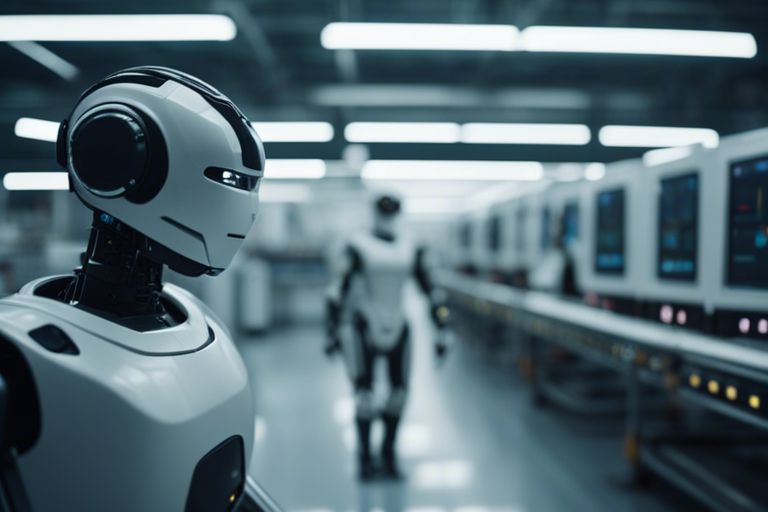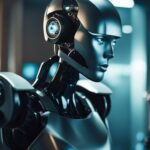Robotics – Will It Eliminate The Need For Human Intervention In Various Industries?
Exploring the realm of robotics brings about a substantial debate on the future of human intervention in various industries. With advancements in artificial intelligence and automation, the question arises whether robotics will ultimately diminish the necessity for human involvement. While certain tasks can be efficiently handled by robots, the implications of complete automation raise concerns about job loss, ethical dilemmas, and the impact on the economy. Understanding the potential of robotics to revolutionize industries is crucial, yet navigating the delicate balance between innovation and human employment poses intricate challenges that warrant discussion and critical examination.
Extent of Robotics in Key Industries
Manufacturing Automation
Before delving into the extent of robotics in manufacturing automation, it is crucial to acknowledge the significant role robotics plays in this industry. Manufacturing automation involves the use of robotic systems to perform tasks traditionally carried out by humans, leading to increased efficiency, accuracy, and speed in production processes. With advancements in robotics technology, many repetitive and labor-intensive tasks in manufacturing have been automated, reducing the need for human intervention.
Robots in manufacturing are equipped with sensors and programming that allow them to operate autonomously, make decisions based on real-time data, and adapt to changes in the production environment. This level of automation has revolutionized the manufacturing industry, leading to enhanced productivity and cost savings for businesses.
Agriculture and Field Robotics
On the frontier of agriculture and field robotics, robotics has made significant strides in recent years. From autonomous tractors to drones for crop monitoring, robots are increasingly being used to optimize agricultural practices and improve farm yields. By employing robotics in agriculture, farmers can reduce manual labor, enhance crop management, and increase overall efficiency in food production.
Furthermore, robotics in agriculture enables the collection of vast amounts of data on soil health, crop growth, and environmental conditions, allowing farmers to make informed decisions to maximize yield and minimize resource wastage. The integration of robotics in agriculture has the potential to transform the industry and address challenges such as labor shortages and sustainability concerns.
Agriculture and field robotics are not only limited to large-scale farming operations but also extend to precision agriculture techniques that cater to smaller farms. These technologies help farmers optimize resources, reduce environmental impact, and improve crop quality, making farming more sustainable and efficient.
Healthcare and Medical Robotics
Extent of robotics in healthcare and medical robotics is vast and continues to expand rapidly. Robots are now being used in various medical applications, including surgery, rehabilitation, and patient care. Surgical robots, for example, enable precise and minimally invasive procedures, resulting in faster recovery times and reduced risk of complications for patients.
Robots in healthcare also assist in tasks such as medication dispensing, patient monitoring, and physical therapy, providing healthcare professionals with valuable support and enhancing the quality of care for patients. The use of robotics in healthcare not only improves clinical outcomes but also addresses challenges such as workforce shortages and rising healthcare costs.
Healthcare and medical robotics have the potential to revolutionize the way healthcare services are delivered, making them more accessible, efficient, and patient-centric. As technology continues to advance, the integration of robotics in healthcare is expected to further enhance medical practices and improve patient outcomes.
Service Industry and Humanoid Robots
To explore the extent of robotics in the service industry and humanoid robots, it is essential to understand the impact of robotics in sectors such as hospitality, retail, and customer service. Industries are increasingly deploying humanoid robots to provide services such as information assistance, entertainment, and even companionship to customers.
Robots in the service industry can streamline operations, improve customer experiences, and reduce costs for businesses. From automated check-in at hotels to robotic customer service agents, these humanoid robots are designed to interact with humans in a natural and intuitive manner, enhancing overall service quality.
Healthcare is another area where humanoid robots are gaining traction, helping patients with tasks such as rehabilitation exercises, medication reminders, and companionship. These robots not only improve patient independence and well-being but also alleviate the burden on healthcare providers, allowing them to focus on more critical care tasks.
Human-Robot Collaboration
To fully understand the impact of robotics on various industries, it is essential to explore the concept of human-robot collaboration. This collaboration represents a shift in how humans and robots work together in a complementary manner to enhance productivity and efficiency.
Complementary Roles of Humans and Robots
Robots are revolutionizing industries by taking on tasks that are repetitive, dangerous, or require extreme precision. They excel in these areas, allowing humans to focus on more complex problem-solving, creativity, and decision-making tasks. This complementary relationship ensures that the strengths of each are utilized to their full potential, resulting in a highly productive and efficient workforce.
Robots can handle monotonous tasks with consistent precision, while humans can oversee operations, adapt to changing circumstances, and provide the creativity and emotional intelligence that robots lack. This collaboration opens up new possibilities for innovation and growth across industries, paving the way for a more dynamic and agile workforce.
Skill Development and the Changing Workforce
The integration of robots into the workforce is reshaping the skills required of human workers. As automation becomes more prevalent, there is a growing emphasis on developing skills that complement robotic technology, such as programming, troubleshooting, and maintenance. This shift is driving the need for continuous upskilling and reskilling to ensure that the workforce remains relevant and competitive in the digital age.
Plus, with robots taking on routine and physically demanding tasks, human workers have the opportunity to focus on honing their higher-level cognitive skills, interpersonal communication, and problem-solving abilities. This dual approach to skill development not only enhances individual capabilities but also contributes to the overall efficiency and adaptability of the workforce as a whole.
Ethical and Economic Considerations
Job Displacement and Societal Impact
Ethical concerns surrounding robotics and automation often center around the potential for job displacement and its societal impact. As robots become more advanced and capable of performing tasks traditionally done by humans, there is a fear that this could lead to mass unemployment and social upheaval.
However, it is essential to consider that the integration of robotics in industries can also create new job opportunities and lead to the upskilling of the workforce. By automating repetitive or dangerous tasks, workers can focus on more creative and strategic roles that require human capabilities such as critical thinking and emotional intelligence.
Long-Term Economic Effects and Policy Responses
Considerations around the long-term economic effects of robotics and automation are crucial for policymakers and industry leaders. While initial investments in robotics may lead to cost savings and increased productivity, there are concerns about the widening wealth gap and unequal distribution of benefits.
Policy responses such as reskilling programs, universal basic income, and regulations to ensure fair working conditions for both humans and robots are being considered to address these economic challenges. It is imperative for stakeholders to collaborate and develop ethical frameworks that prioritize both economic prosperity and societal well-being.
Impact: The decisions made in response to the ethical and economic considerations of robotics will have a profound impact on the future of work and society as a whole. It is essential to carefully navigate these complex issues to ensure a fair and sustainable transition towards a more automated world.

Advancements and Future Outlook
Technological Innovations on the Horizon
The rapid pace of technological advancements in robotics is paving the way for groundbreaking innovations that have the potential to revolutionize various industries. The integration of artificial intelligence, machine learning, and advanced sensors is enhancing the capabilities of robots, enabling them to adapt to dynamic environments and perform complex tasks with precision. The development of autonomous robots equipped with sophisticated algorithms is reshaping the landscape of industries such as manufacturing, healthcare, and agriculture.
The convergence of robotics with other cutting-edge technologies like 5G connectivity and cloud computing is unlocking new possibilities for enhancing collaboration between humans and robots. The emergence of human-robot collaboration platforms is streamlining operations, improving efficiency, and enhancing safety in various workplace settings. The future holds immense potential for robotics to drive innovation, productivity, and profitability across diverse sectors.
Predictions for Human-Robot Interdependency
Horizon
Technological advancements in robotics are projected to revolutionize the nature of work, leading to a closer interdependency between humans and robots. The integration of robots into the workforce is anticipated to augment human capabilities, enhance productivity, and accelerate the pace of innovation. The future workplace is envisioned to be characterized by seamless collaboration between humans and robots, where each complements the strengths of the other to achieve optimal results.
Technological advancements in robotics are poised to redefine traditional job roles, requiring workers to acquire new skills and adapt to changing dynamics in the workforce. The shift towards human-robot interdependency signifies a paradigm shift in how tasks are performed and underscores the importance of leveraging technology to drive progress and competitiveness in the global economy.
To wrap up
Following this exploration into the impacts of robotics on different industries, it is evident that while automation and artificial intelligence have become increasingly prevalent, the need for human intervention remains crucial. Robotics may streamline processes, enhance efficiency, and reduce errors, but they are not capable of replacing the diverse skillsets, creativity, and decision-making abilities that humans bring to the table. Collaboration between humans and robots in various industries will likely continue to evolve, with each complementing the strengths of the other. As we move forward, it is essential to embrace the advancements in robotics while also valuing the irreplaceable contributions that human workers bring to the workforce.
FAQ
Q: What is Robotics?
A: Robotics is a branch of engineering and science that involves the design, construction, operation, and use of robots to perform tasks in various industries.
Q: How are robots used in industries?
A: Robots are used in industries for tasks that are repetitive, dangerous, or require precision, such as assembly line manufacturing, packaging, welding, and material handling.
Q: Will robotics eliminate the need for human intervention in various industries?
A: While robotics can automate many tasks in industries, human intervention is still essential for decision-making, problem-solving, creativity, and tasks that require empathy and social interaction.
Q: What are the benefits of using robotics in industries?
A: The benefits of using robotics in industries include increased efficiency, productivity, consistency, accuracy, and safety, as well as the ability to work in hazardous environments or perform tasks beyond human capabilities.
Q: What are the challenges associated with robotics in industries?
A: Challenges associated with robotics in industries include high initial costs, technical complexity, maintenance requirements, potential job displacement, ethical considerations, and the need for continuous skills development for human workers.
![]()












